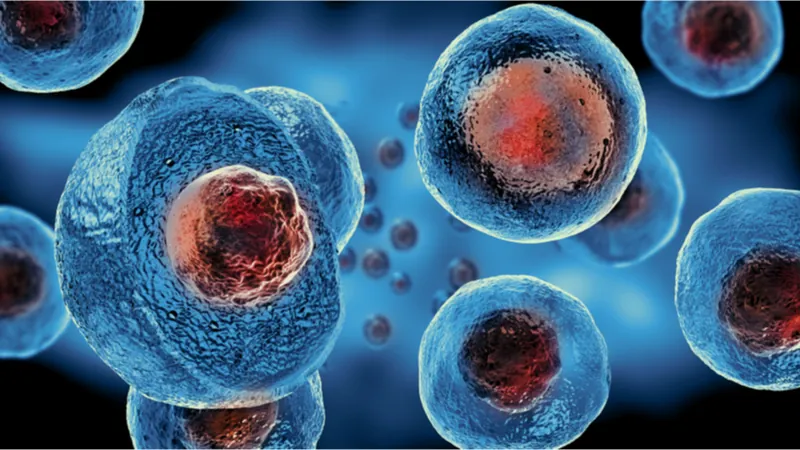Scientists have shown that in vivo partial cellular reprogramming can be safe and effective in an animal model, although the rejuvenation was mostly limited to long-term treatments and two tissue types [1].
There and back again
Cellular reprogramming sounds like a technology from Star Trek, and it is undeniably futuristic. Our tissues mostly consist of various specialized cells that develop (differentiate) from pluripotent stem cells. Differentiated cells get old, but overexpressing certain regulatory genes makes them revert to their pluripotent state in a process that is accompanied by significant rejuvenation; this is cellular reprogramming. This novel technology can produce stem cells from a person’s somatic cells, which can be very useful against various diseases, but it is also being actively explored by geroscientists for its rejuvenation potential [2].
Obviously, we don’t want all our somatic cells to become stem cells: we need them to support our tissues. Reprogramming somatic cells all the way to their pluripotent state and back also carries a significant risk of carcinogenic mutations and teratomas, ghastly tumors consisting of many types of tissue [3]. This led to the rise of partial reprogramming, in which the reprogramming factors are expressed for just enough time to achieve rejuvenation without pushing the cell all the way to pluripotency.

Read More
Partial reprogramming has shown a lot of potential in vitro, but in vivo experiments are scarce, and scientists are still searching for the Goldilocks zone where cells can be rejuvenated without adverse effects. In this new study, the researchers describe a novel protocol for partial reprogramming in vivo that appears safe and at least somewhat effective.
Naturally aging mice
The scientists produced mice that overexpress the reprogramming factors when given the drug doxycycline, which is an established method of in vivo reprogramming. Unlike in some earlier studies, these mice aged naturally without any genetic engineering for accelerated aging. The researchers chose to use the original four OSKM reprogramming factors rather than an alternative version.
The mice were divided into three study groups and several control groups. Two of the study groups underwent long-term reprogramming starting at 12 and 15 months of age, respectively, and continuing to 22 months, which is quite old in mouse years. The third group underwent a much shorter reprogramming protocol, starting at 25 months and continuing for one month. The reprogramming phase consisted of continuous cycles of 2 days on and 5 days off doxycycline.
A mixed bag of results
All the protocols appeared to be safe: no teratomas were formed, and no pathological phenotypes were reported. Following the reprogramming, rejuvenation was assessed in several tissues. First, the researchers used epigenetic clocks that register age-related changes in DNA methylation to calculate biological age. The clocks revealed significant reduction of epigenetic age in the mice that underwent long-term reprogramming, but not in the short-term group. However, epigenetic rejuvenation was only observed in two tissues: the kidney and skin.
Some signs of rejuvenation did appear in the short-treatment group too, including altered gene expression with genes involved in hair growth cycle upregulated and inflammation-related genes downregulated. In both long-term groups, gene expression changes were even more pronounced, with genes involved in inflammation and cellular senescence downregulated. The proliferation rates of cells in the skin of all treated mice were increased compared to the controls, and in the long-term groups, a significant decrease in fibrosis during wound healing was detected.
The researchers also performed a broad analysis of the mice’s blood serum, looking for any changes compared to controls. Here, again, changes in the short-term group were minuscule while changes in the long-term groups were more pronounced. Some metabolites that are elevated in progeroid mice were decreased in those groups, causing the researchers to conclude that some overall rejuvenation on the physiological level did occur.
However, the researchers did not report any changes in average or maximum longevity in the treated mice compared to controls. Moreover, even the long-term treatment did not cause any discernible increase in fitness.
Conclusion
This pioneering study of partial cellular reprogramming in vivo brings mixed results. On one hand, the treatment protocols that were used appear to be safe, and at least some rejuvenation of transcriptional, metabolic, and functional levels was observed. On the other hand, rejuvenation only occurred in two tissues, and only as a result of the long-term treatment, which raises questions about the limits of partial reprogramming. This should not discourage us, though, as in vivo partial reprogramming is still in its infancy, and we can expect things to keep improving.
Literature
[1] Browder, K. C., Reddy, P., Yamamoto, M., Haghani, A., Guillen, I. G., Sahu, S., … & Izpisua Belmonte, J. C. (2022). In vivo partial reprogramming alters age-associated molecular changes during physiological aging in mice. Nature Aging, 1-11.
[2] Gill, D., Parry, A., Santos, F., Hernando-Herraez, I., Stubbs, T. M., Milagre, I., & Reik, W. (2021). Multi-omic rejuvenation of human cells by maturation phase transient reprogramming. bioRxiv.
[3] Wuputra, K., Ku, C. C., Wu, D. C., Lin, Y. C., Saito, S., & Yokoyama, K. K. (2020). Prevention of tumor risk associated with the reprogramming of human pluripotent stem cells. Journal of Experimental & Clinical Cancer Research, 39(1), 1-24.





